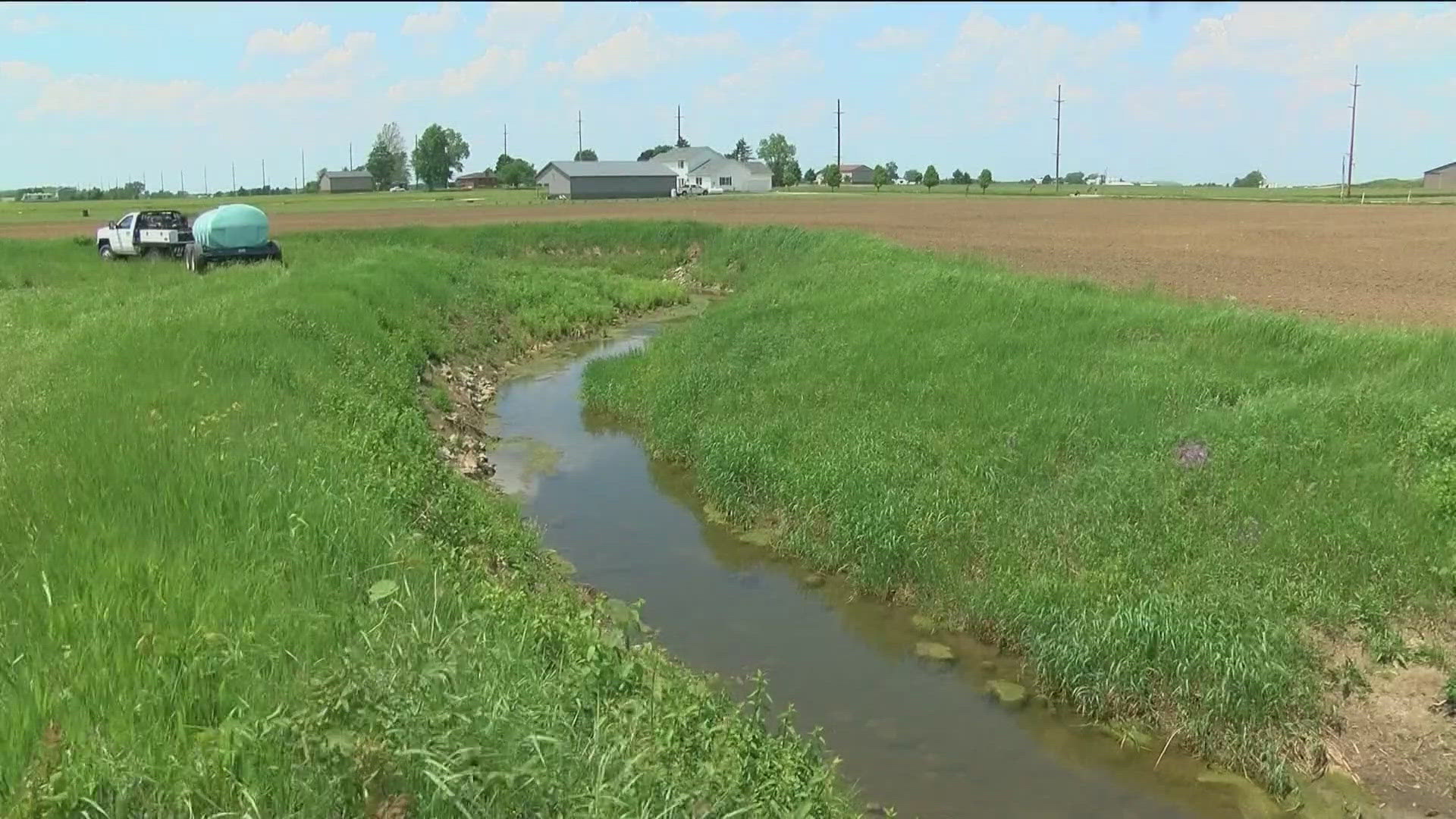TOLEDO, Ohio — Lake Erie for farmers is the engine for growth, so keeping it clean is a priority.
"Farmers will be the first to tell you they understand their part of the challenge," said Ty Higgins, senior director of communications for the Ohio Farm Bureau. "But more than any other group that's part of the challenge, farmers want to be part of the solution."
The problem that needs a solution is one the lake has had for years: nutrient run-off from fertilizer in soil.
RELATED: Ohio farmers accept being part of the algal bloom problem, but intend on being part of the solution
According to a 2021 report from Ohio State University, studies found that about 85% of the phosphorus run-off into Lake Erie came from agriculture.
So, how does the state try to fix this?
"Every farm is different," Higgins said. "Water quality practices are not a one-size-fits-all approach, so to be able to find out what works on their farm, to be able to do more of those practices and do them better has really done wonders over the last five years with H2Ohio."
The state in 2019 created H2Ohio to teach farmers water quality practices. It has 2600 farmers and nearly 2 million acres enrolled.
One of the goals is addressing phosphorus runoff from fertilizer, and officials say they have done so.
"When we talk with our farmers, we tell them 'focus on their piece of land, do what you can do on the land that you control and let that other noise worry about itself,'" said Jordan Hoewischer, director of water quality and research for the Ohio Farm Bureau. "We really want to make sure that they are moving up the conservation ladder. They're increasing what they're doing and I think they've responded when there's been a good program like H2Ohio to attach themselves to."
But there are those who say otherwise.
Mike Ferner, who has been with Lake Erie Advocates since 2015, says the problems are larger than just phosphorus run-off; it's also about factory farms.
"When you try to take livestock agriculture and try to start doing it at that industrial scale is when you run into problems," said Ferner, a coordinator for the advocates.
The Ohio Environmental Protection Agency says in 2021 there were 150 large concentrated animal feeding operations, known as CAFOs.
These farms typically raise lots of manure — 1.5 billion gallons annually, according to a 2019 report from the Ohio Environment Council.
"They pump it out, put it in tankers and they take it out to the fields," Ferner said. They apply this over and over and over again and it goes right down into the field drains because this used to be the Great Black Swamp and it hits those drains and goes into the nearest stream."
But it would be hard to argue who knows water better than someone who is always on it.
Greg Meye, owner of Full Pull Charters, has been a Lake Erie boater for over 35 years.
In his career, he has seen many challenges for the lake and wants people to work together to keep Lake Erie safe.
"Everybody needs to come together at the table to get this issue fixed and to make sure we have a clean lake for years to come for our kids and grandkids so we can have an industry and tourism business here and also have food and farms that produce food for the whole country," he said.

